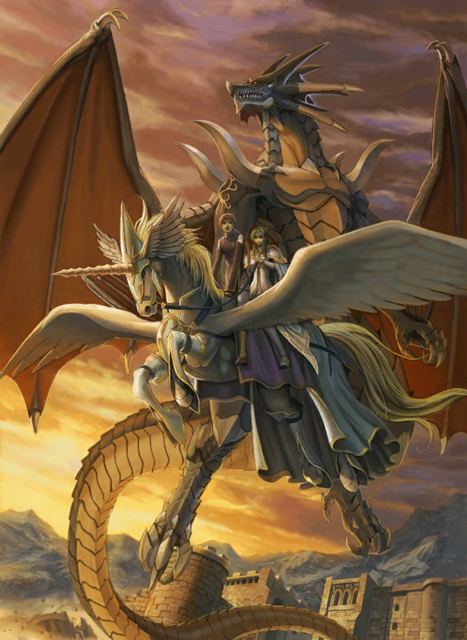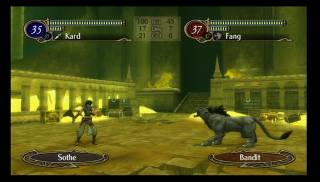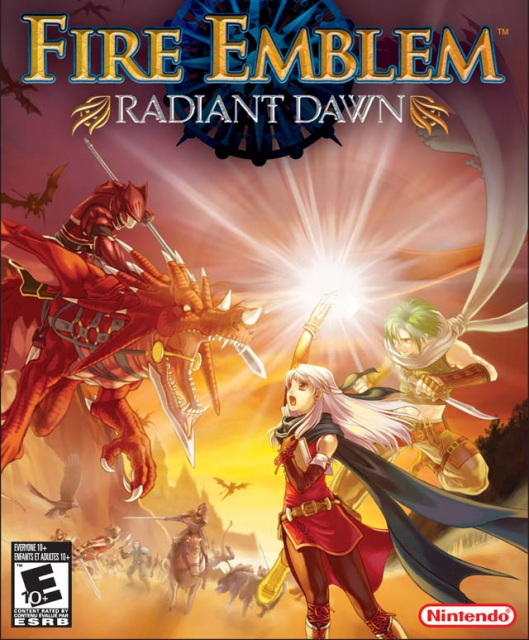A decent entry in the series, but aimed mainly at longtime fans.
Fire Emblem: Radiant Dawn is the third America-released game in the Fire Emblem series, and the first sequel to a previous Fire Emblem game that American audiences have seen. Normally, sequels are an opportunity for developers to try something new or fix any flaws in the first game. While Radiant Dawn certainly refines many of the features from Path of Radiance, it also mucks up several features that previous games in the series have been doing correctly for years.
Being a sequel to the GameCube’s Path of Radiance, the story picks up three years after the end of its predecessor, where the Begnion Empire has conquered neighboring Daein. They’re abusing their power as rulers, and a Daein independence group has decided to take the country back for themselves, setting the stage for the rest of the story. Compared to other Fire Emblem games, the story in Radiant Dawn uses a lot of creative storytelling mechanics, even if they do interfere with the gameplay. For example, this game is the only one in the series without clearly defined lords/protagonists. While this allows for a more flexible story, it can lead to scenarios where the game becomes more difficult than need be. Mostly, this is limited to when you fight characters you were playing as earlier, meaning the tank you used to obliterate half the world will now be the bane of your very existence.

Yet I would not have Nintendo omit it, mainly because it helps communicate deep/misanthropic messages like the imperfection of everything or how there is no true evil. However, like many other aspects of the game, this message isn’t fully realized, in this case due to poorly developed villains. Most of the villains commit heinous acts with no moral ambiguity, but have little motivation to do so, unlike other villains in the series. This is quite disappointing, since the playable characters are so well developed, even if it is through dubious methods.
The method in question is the support system, a notable feature of the series since The Sealed Sword. The basic idea is that two characters that spend a lot of time with each other will begin to form bonds that aid them in battle. That general idea hasn’t changed, but many of the technical features have for no reason. For example, characters can only have one support at a time, and the bonds no longer form on the battlefield, but at your base instead. The character-developing conversations are still there, but not only did Nintendo remove the character development part, but they also removed the parts of the conversations that make any sense; in any given conversation, two characters can talk about totally different subjects without transitioning between the two in any way. This even happens for characters with whom it would make sense to have supports, making the entire feature seem lazy and unfinished. The battle bonuses are still present, but the main reason people like supports is because they reveal things about the characters that would not be revealed within the game otherwise.
Speaking of battles, they are perhaps the strongest part of the game. Fights play a lot like an RPG version of chess: you move your units, perform a given action for each one, and then the enemy does the same. The only major addition to this formula is a race called the laguz. They’re able to transform into animals for a certain amount of time, have access to different abilities than their human counterparts (some of the later ones unnecessary), and are, more often than not, incredibly powerful units. Granted, this becomes somewhat necessary near the end of the game, but something about destroying half the map with a single unit seems to dampen the strategic feel that Radiant Dawn is establishing.

Especially when these powerful units appear early in the game. Although these units aren’t nearly as capable as the late-game entries, overall, they still feel more powerful than in previous entries. Add in the generally weak feel of a large number of enemies and the fact that characters can now have two promotions (upgrades that make a character more powerful and allow them to perform more diverse actions), and it is easy to understand why certain portions of the game can be very easy. This is not to say that the game is easy; in fact, the difficulty curve in Fire Emblem: Radiant Dawn oscillates greatly, ranging from chapters clearable in one attempt to chapters that can only be completed after a ridiculous amount of resets. Fortunately, you can now do this directly from the controller, and it no longer comes at the cost of progress through the chapter. A new battle save feature allows you to save your place mid-battle, making some of the larger, more complex maps more achievable.
Yet even at its hardest moments, it is hard to fault the game, mainly because it always has a sense of legitimacy about it. While there are a high amount of factors to monitor and the random number generator is more lenient than in previous games, Radiant Dawn still seems to reward tight, creative strategies. Very rarely will the game do something that’s 100% cheap, and even when it is cheap, there’s still a way around it. In addition, unique objectives and scenarios make it very hard to blast through the game on a single strategy.
The only major flaw not mentioned so far is how disappointing the graphics are. While the game does look better than its predecessor does, it isn’t by much; at times, you can mistake Radiant Dawn for a Dreamcast game. The cel-shading makes characters look too simplistic, the animations range from good to lazy, and overall, it does not look like it is anywhere near to using the Wii’s full graphical capabilities. The only notably good thing about the graphics is that there are far more CGI cutscenes than there were in Path of Radiance. While they look good, their quality isn’t enough to justify the mediocre in-game graphics.
On that same note, the graphics themselves aren’t enough to destroy the game. The gameplay, while somewhat rough and in need of further refinement, is just as good as any of its predecessors, and the same can be said of the story. However, Radiant Dawn is primarily a game for fans of the series, and it most likely will not attract new players to the series.
